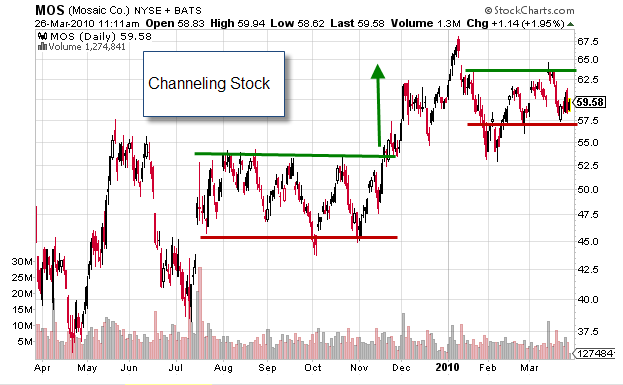Courtesy of MarketTamer.com
– Stocks will typically channel 65-70% of the time.
– There are essentially three types of channels; Ascending, Descending and Sideways.
– The channel is comprised of two parallel trend lines which define support and resistance.
– The trading opportunity is as a result of buying the bounce off the lower trend line and selling the resistance.
– Channeling stocks as a continuation pattern occur as the stock trends and then consolidates for a period of time, only to eventually break out to resume the prior trend.
– Ascending Channels are usually embedded in a broader downtrend and act as a respite to the primary downtrend.
– Accordingly, Descending Channels are a respite in a broader uptrend and will more often than not resume the initial bullish trend after channeling.
– Sideways Channels are considered consolidations before resuming the original trend.
– The investment community recognizes that stocks neither go directly up nor down without pause.
– A majority of trading activity resides in channels as supply and demand play “tug of war”.
– Eventually traders will push the stock out of the range.
– The quality of the breakout/breakdown move should be measured by the investor participation as evidenced by increased volume.
– The opportunity to make money with channeling stocks are as a result of two approaches: 1) buy on the bounce off of the lower trend line and sell at the top of the channel at resistance and 2) Play the breakout/breakdown out of the channel.



